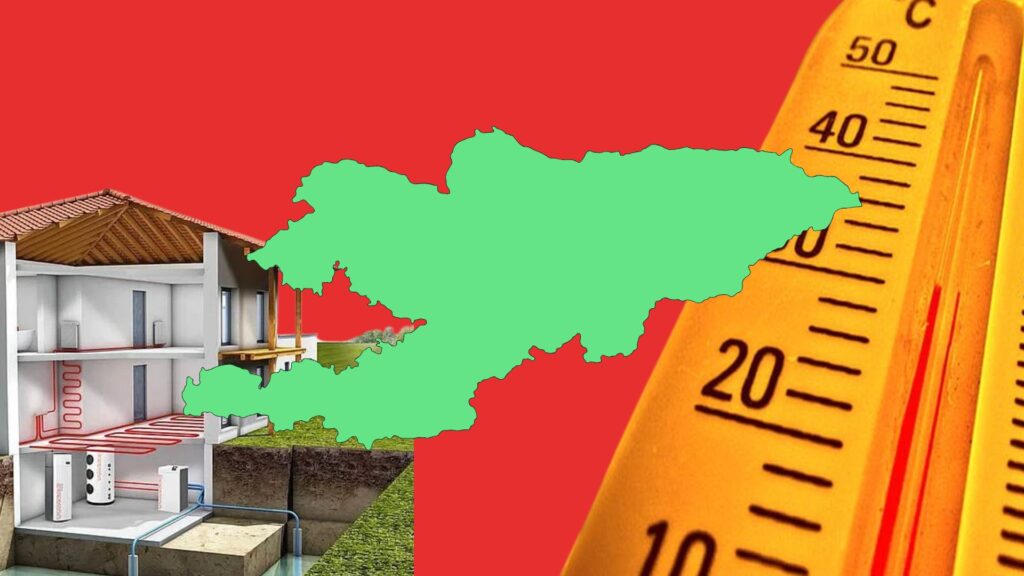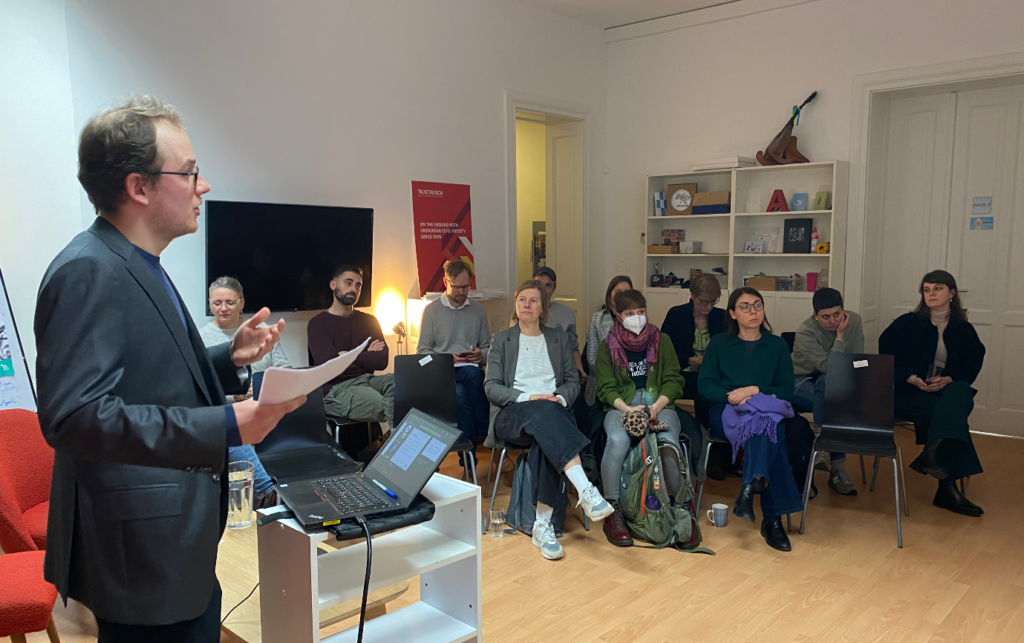Heat Pumps in Kyrgyzstan: Ecology, Economy, and the Future of Energy – Interview with Farhad Yarullin
According to a World Bank report, the heating sector in Europe and Central Asia, including Kyrgyzstan, requires a transition to sustainable technologies. In the region, low-quality coal with a high sulfur content is the primary heating source, deteriorating air quality. This reliance stems from the lack of gasification, electricity consumption limitations, and low costs. Electricity, the second most popular heating source, accounts for 24% of consumed energy. However, Kyrgyzstan faces an energy crisis, with some electricity being imported. Natural gas, covering only 38% of the territory, is the most expensive heating option.
At the Urban Forum, we learned about heat pump technology and decided to interview Farhad Yarullin, whose company has been installing such systems in Kyrgyz homes for several years.
What is a heat pump, and how does it work?
This technology is especially relevant for Kyrgyzstan. Reports from public organizations, such as the 2023–2024 Overview of Fine Particulate Matter Concentrations, indicate that air pollution in Kyrgyz cities worsens significantly in colder months. This is due to the widespread use of coal for heating, which emits not only carbon dioxide (CO2) but also fine particles (PM2.5 and PM10) that penetrate the lungs and bloodstream. Therefore, coal heating is a practice that has severe health impacts.
Heat pumps reduce the need for traditional fuels, helping reduce harmful emissions and improve air quality. This is crucial for residents’ health. Many of our clients choose heat pumps not only for their economic or environmental benefits but also for their convenience: no more buying coal, stoking fires, or cleaning ash. Once the equipment is installed, life becomes much more comfortable.
What is the process of installing a heat pump in Kyrgyzstan?
The most energy-efficient type is the geothermal “water-to-water” heat pump. Installation involves surveying the site, drilling wells, and connecting the equipment. In simple cases, this takes 1–2 days; in more complex cases, up to a week. We’re talking about private homes with plots where wells can be drilled for water access. In Bishkek, such installations are feasible only in the city’s northern part due to soil conditions. While we operate nationwide, there are regions where “water-to-water” systems cannot be installed. In those cases, we install “air-to-water” pumps, which, while less efficient, are still more economical than alternative heating sources.
How economically viable are heat pumps?
A typical heat pump installation costs $5,000–10,000, which is unaffordable for most Kyrgyzstan residents. To address this, we introduced a PAYG (Pay-As-You-Go) model, enabling customers to rent equipment and pay only for the heat energy used. The installation company handles maintenance, and heating costs are lower than with other sources.
Our average installation cost is $1,000. We rent out all equipment and charge a subscription fee. The investment pays off quickly. The pumps consume significantly less electricity, and maintenance costs are lower. Kyrgyzstan experiences electricity shortages, with some energy being imported. However, with a heat pump, you are autonomous – you have light and heat. Remember, Kyrgyzstan is among the ten coldest countries in the world. In lowland areas, average winter temperatures range from -2°C to -15°C, while in mountainous areas, they drop to -30°C. Winters here are harsh, so power and heat outages have severe consequences. New technologies can solve these problems.
Why are heat pumps environmentally friendly?
In Kyrgyzstan, 92% of electricity is generated from hydroelectric power, making it green energy. Using such energy to power heat pumps results in “green” heat.
Do heat pumps help improve the environmental situation in Bishkek?
During winter, Bishkek’s air is heavily polluted due to coal heating. Heat pumps reduce the need for traditional fuels, cutting harmful emissions and improving air quality. This is vital for residents’ health. Many clients choose heat pumps not only for economic and environmental reasons but also for convenience. Imagine no longer needing to buy tons of coal for the winter, stoke fires, or clean up afterward. Drill a well, install the equipment, and that’s it.
Kyrgyzstan has abundant natural resources, such as soil and water, which can be harnessed for heat pumps. Moreover, the country needs solutions to reduce its dependence on fossil fuels since traditional heating methods significantly pollute the air, especially in winter.
Are heat pumps suitable for a cold climate like Bishkek’s?
Yes, new-generation heat pumps are adapted for cold climates, effectively operating at temperatures as low as -30°C or even lower. For maximum efficiency, they can be combined with building insulation systems. Finding and implementing such innovative solutions is crucial for us.
What is the state of the heat pump market in Kyrgyzstan? Are they in demand?
Several companies are active in the heat pump market, each with its approach to development and production. Our company began developing its system in 2017 and successfully completed it by 2019. We are now installing 500 systems annually, demonstrating strong demand for our product.
Our clients include residents of Bishkek, other major cities, and even rural settlements, including Uyghur and Dungan communities, highlighting the technology’s broad applicability.
Heat pumps are widely used in Europe, where the market is much more vibrant than in Central Asia. We source components from Europe to ensure the quality and reliability of our systems. However, competitors prefer Asian technology and equipment, leading to different approaches and outcomes.
What is the future of heat pumps in Kyrgyzstan?
It is crucial to educate people about these technologies—how they work and why they matter for the environment. Organizations like MoveGreen are doing an excellent job raising awareness about air pollution, its health impacts, and what can be done to reduce it. I am glad I participated in the Urban Forum; it provided an opportunity to share our work with a broad audience and confirm that we are on the right path by promoting safe, eco-friendly technologies in Kyrgyzstan.





